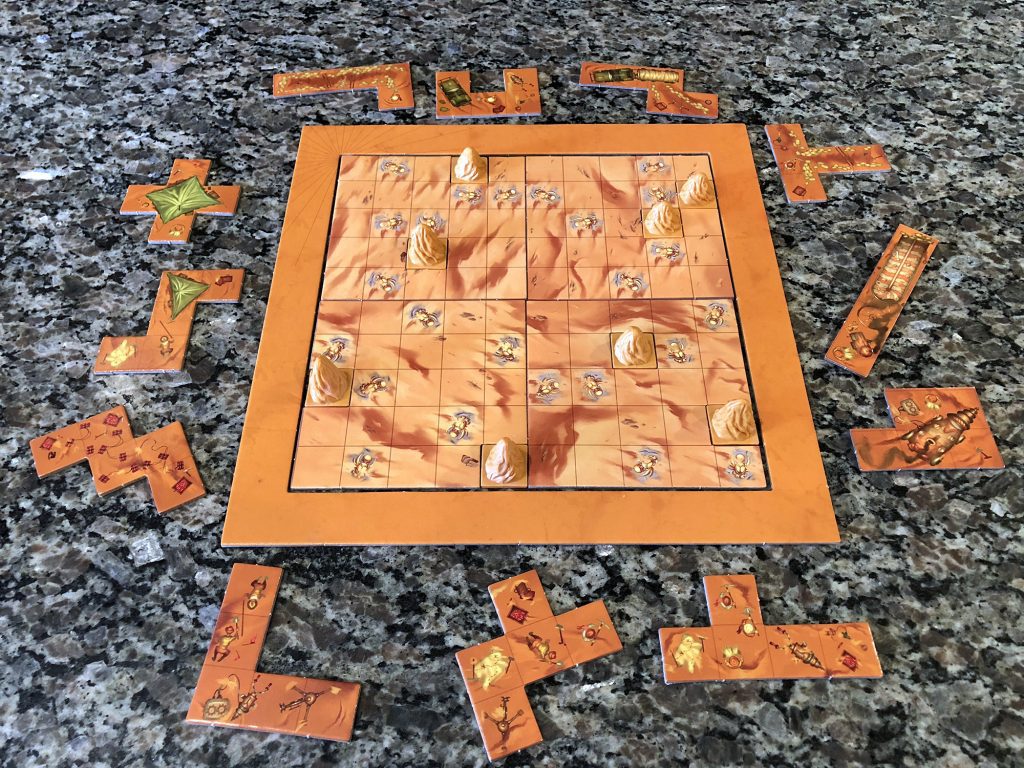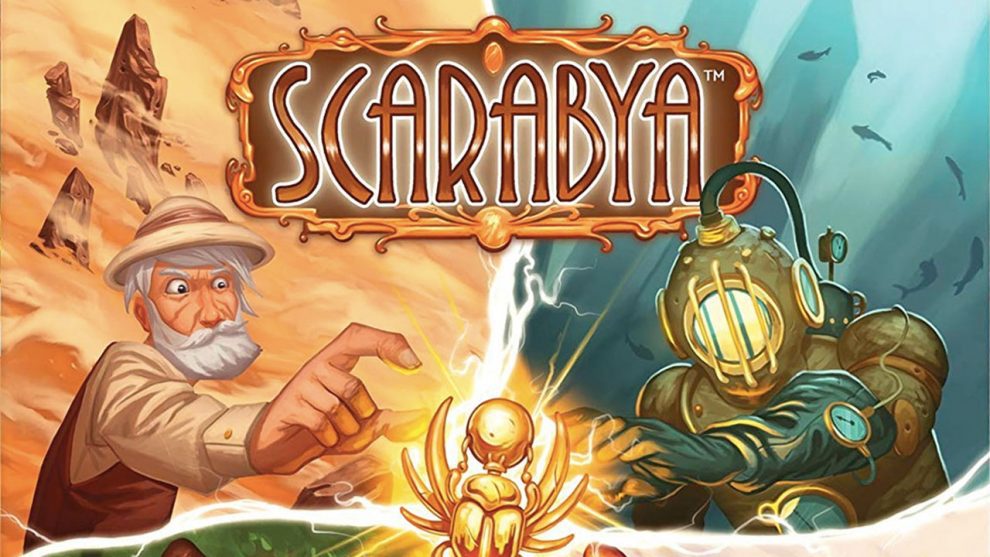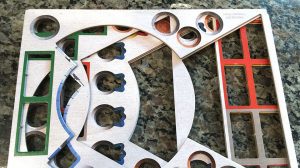Disclosure: Meeple Mountain received a free copy of this product in exchange for an honest, unbiased review. This review is not intended to be an endorsement.
The popularity of polyomino style games has surged in the last few years. Games like NMBR 9, A Feast for Odin, and even Kingdomino, have proven that there’s quite a demand for these puzzly, thinky, spatial games. Scarabya, from Blue Orange Games, is the newest contender for your time and your gaming dollar. Is it good? You bet! Let’s find out why.
Overview & Gameplay
In Scarabya players take on the role of competing archaeologists, each desperately searching their dig sites for the golden scarabs rumored to be buried there. The sites of each player are set up identically, and each player has the same set of pieces. Scarabya is a simultaneous play game; each player will be placing the same shaped piece on their board at the same time. Shapes are determined by turning over the topmost card from a central deck. Each player must select the matching shape from their set, in much the same way as Karuba.
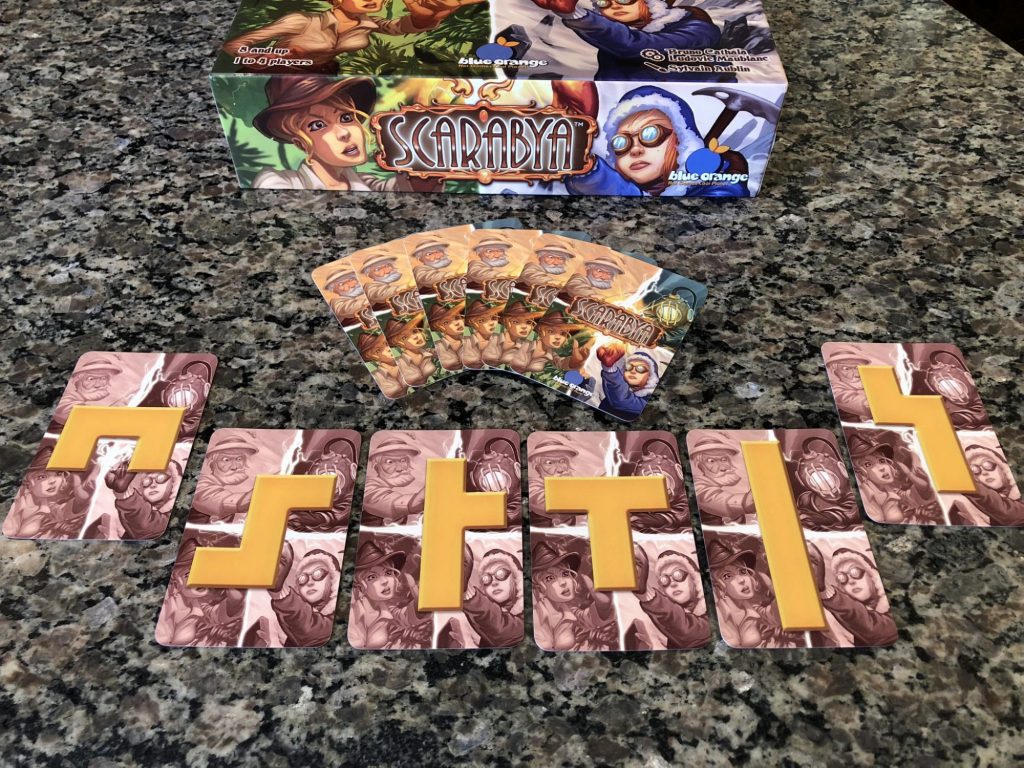
Placing a Piece
As in any polyomino style game, piece placement is of the utmost importance, and knowing what your placement rules are must come first. The very first piece you place must touch one of the four middle squares in the middle of your board. All subsequent pieces must touch an existing piece on a flat edge, no corner to corner placement allowed. Lastly no piece may extend onto, or past, the edge of your dig site. As if placing a piece wasn’t hard enough, your dig site contains 8 stalagmites which are interspersed throughout your player board.

This mixture of rules and natural obstacles ensures you’ll be trampling valuable scarabs in your rush to collect just a few.
Capturing Scarabs & Scoring
Points are scored by using the shapes to surround golden scarabs in your dig site: block one or more golden scarabs into a space of 1-4 squares and you’ll earn 1 point per grid square for every scarab in that section. Place a marker of the appropriate point value onto each qualifying scarab and get ready for the next piece.
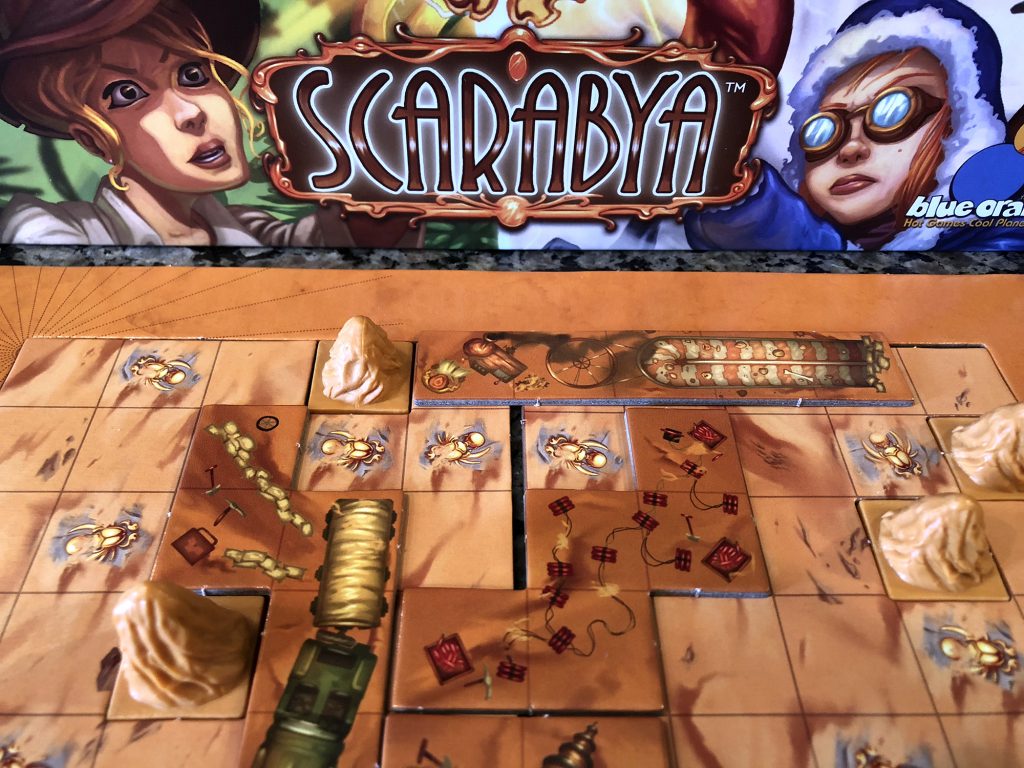
The game is over when all of the pieces have either been placed on your board, or discarded. Tally up all the points on your board and the archaeologist with the most points is the winner!
Thoughts on Scarabya
Up until the week before Gen Con I hadn’t even heard of this game. Then I saw several people mention it, and one reviewer say that he played it 12 times in a weekend. After that I knew I had to at least give it a shot. Thankfully Blue Orange provided a review copy we could play, and boy I’m glad they did.
Scarabya isn’t a deep game, in fact there’s not much planning ahead. Because shapes are drawn in random order, you’re never sure what you’re going to be placing. Sure, you’ll occasionally get exactly the piece you need, but most often you have to make do with what you get. This means a lot of suboptimal placements as you feverishly try to maintain hope you’ll get the right piece and be able to hit the big score.
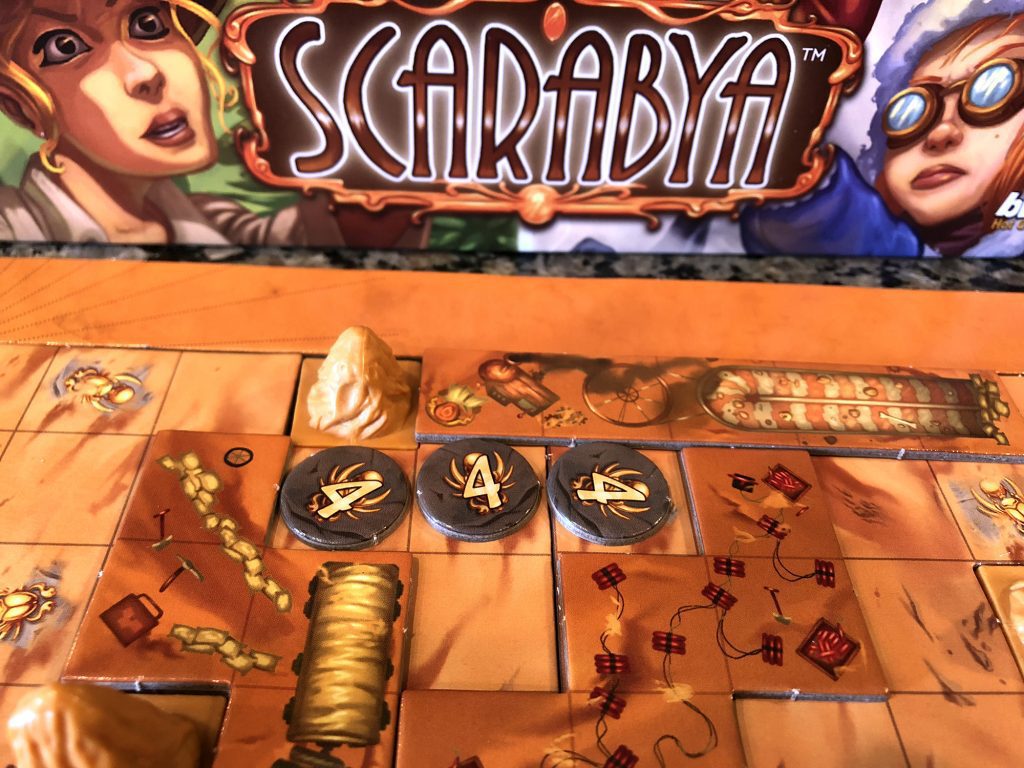
Each player has her own board and pieces, which in Scarabya results in zero player interaction. You cannot affect the board of another player, nor can they affect yours; but that’s okay. Just treat it like a puzzle, one which doesn’t reveal itself to you until the last piece is placed. You’ll rarely score points until your 3rd or 4th turn so planning for future moves is essential. Paying attention to where scarabs are, and where it’s safe to place is important; but going with the flow is even more so.
Is Scarabya right for you? Only you can be that judge, but it’s been right for my family and friends, and I’m thankful it’s in my collection. I expect it’ll get lots of play…at least until the next polyomino game is released. 😀
